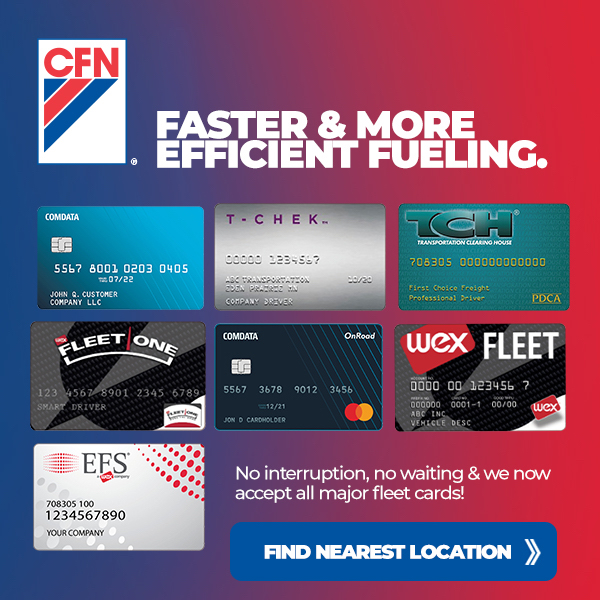
By Steve Saltzgiver, Director of Strategic Innovation, RTA Fleet Management Software
As fleet professionals, we focus on the right metrics to track to monitor how our fleet is performing, and what reports to run to ensure we’re up to date on services and staying on budget.
But how can you determine if you have a successful fleet?
Other industries have books, manuals and more to determine what it means to succeed. There are conferences and keynotes all the time on Customer Success. Even IT departments now have benchmarks to strive to achieve to be deemed successful.
But there has never been a clear definition for Fleet Success.
Until now. My colleagues and I recently defined Fleet Success as:
Achieving a balanced mastery of Stakeholder Satisfaction, Intentional Culture, Resource Efficiency and Risk Management in your fleet operation.
We believe that as you strive to implement each of these four pillars it will lead your fleet operation to success. Not just success in your fleet, but success for your most valuable resource — your people.
Below I will dive deeper into each pillar, its definition, and how it pertains to your fleet.
Stakeholder Satisfaction
Living up to the expectations of those who depend on the job you do.
This might sound simple, but there is a lot here.
First, let’s dig into the concept of “stakeholders.” When you think about your fleet and who you serve, who do you think of? Is it your customers? Upper management? Your employees? It’s likely all of them, and more.
Your customers rely on you to do your job so they can then provide for their customers. Think about store deliveries. If your fleet doesn’t provide the goods to sell in the store, then the store’s customers can’t get what they need.
If your maintenance operation is inefficient and it causes drivers to be delayed starting their routes, then the drivers’ families are at home wondering where their loved ones are. Maybe they’re missing dinner, or maybe it’s a kid’s recital.
The key to Stakeholder Satisfaction is understanding who depends on you and your operation to do their job well.
To identify your primary and secondary stakeholders, use this exercise:
- Draw two circles on a piece of paper.
- Think about your organization and brainstorm a list of people who are immediately impacted by the job you do. Put them in the first circle and note what job they are in and what role they play. These are your primary stakeholders.
- Next, in the second circle, list the people who depend on those in the first circle to do their job. Those will become your secondary stakeholders.
Identifying your stakeholders is just the first step. Once you know who is depending on your fleet, it’s then necessary to ensure you are providing them with the best experiences as possible with your fleet operation.
Intentional Culture
Purposely deciding the type of environment, you want at your fleet and taking ownership to shape that identity.
In fleet, we do not typically spend a lot of time talking about culture, but we should, because it’s so important to your operation’s success.
You might already have a culture at your operation. But I am going to challenge you – did you intentionally create your company’s culture, or did your culture just accidentally morph into what it is today?
Most fleet operations I have worked at had an accidental culture. Sometimes this resulted in a good culture, and sometimes bad. Therefore, it is so important to “purposely” (as the definition states) create a culture.
To do this, you must create a vision for your fleet operation and staff your shop with people who fit the vision and your core values. You must be so dedicated to having the right people on your staff that you will hire people based on if they fit core values and replace those who cannot adapt to the vision and values.
This is hard, but it is necessary. I think we’ve all been in situations where there was a “bad apple” on a team. Think about the negative impact that one person had. Did they spread gossip? Did they undermine the boss (or maybe even you)? And did they bring others down with them? One person can destroy the entire culture at your fleet operation, so it is essential (even if it’s hard) to ensure everyone at your fleet operation fits the culture and the core values.
Resource Efficiency
Making the best use of your two most finite resources – time and money.
This is probably the most straightforward of the four pillars. We do not have an endless supply of money and time – even if we wish we did – so we must stay on budget and be as efficient as possible at our fleet operations.
Through my experiences, I’ve learned that there are three things that drive money and time: assets, people, and operational costs. I follow former General Electric CEO Jack Welsh’s rule that it’s more important to focus on the critical few metrics than the trivial many. While there are endless metrics we can track in fleet, monitoring too many can impact your ability to focus on what’s important. Instead, find those few areas of concern and focus your team’s attention on improving those.
I did this when I worked as VP of Fleet Operations at a large beverage distribution company. We struggled with asset reliability, technician productivity and efficient maintenance management. I created specific metrics to monitor our improvement in these areas and I aligned each employee’s individual goals and reward programs to those three objectives. This gave everyone an incentive to make improvements in those key areas.
Risk Management
The proactive process of identifying, assessing, and controlling the threats to your organization and stakeholders.
You can’t operate a fleet without taking some amount of risk. It’s impossible to eliminate all the potential threats. The goal of the Risk Management pillar is to not do anything without at least identifying what can go wrong. What contingency plans should be put into place? How can you stop something from being a risk? Are you taking the correct safety precautions and wearing the right protective gear? The questions can go on and on.
Fleet is one of the few industries where one mistake can lead to a fatality. Because of this, it’s essential to be proactive to mitigate risks where you can.
I had a wake-up call when I was working as a diesel mechanic years ago. At the end of my shift, I wasn’t yet finished with the bus I was working on, so I asked the guy on the next shift to finish up for me and tighten the tie rod. Well, the next day I came into work, and I got called into the office. That bus I was working on went out on a route and the wheel fell off. The guy forgot to tighten the tie rod like I had asked. It was a scary incident, but it was a good reminder that lives are at stake each and every day, and it taught me a valuable lesson in needing to take ownership. Needless to say, I never left a shift again without finishing all my work.
In fleet, there will always be risks. Every time a vehicle leaves the shop there’s the risk that it will breakdown unexpectedly, or that a driver will get into an accident. The goal of this pillar is to identify, assess and control what risks you can.
 By focusing on these four pillars, my colleagues and I are confident your fleet can be on the road to success. I barely scratched the surface here, but I am going to be part of a few fun projects in the coming months, including launching a book on Fleet Success, and hosting the first ever Fleet Success Summit. I also discuss these pillars and other topics related to fleet success on a new podcast, “The Fleet Success Show.” This is an exciting topic, and I am thrilled to be able to help your fleet succeed.
By focusing on these four pillars, my colleagues and I are confident your fleet can be on the road to success. I barely scratched the surface here, but I am going to be part of a few fun projects in the coming months, including launching a book on Fleet Success, and hosting the first ever Fleet Success Summit. I also discuss these pillars and other topics related to fleet success on a new podcast, “The Fleet Success Show.” This is an exciting topic, and I am thrilled to be able to help your fleet succeed.





